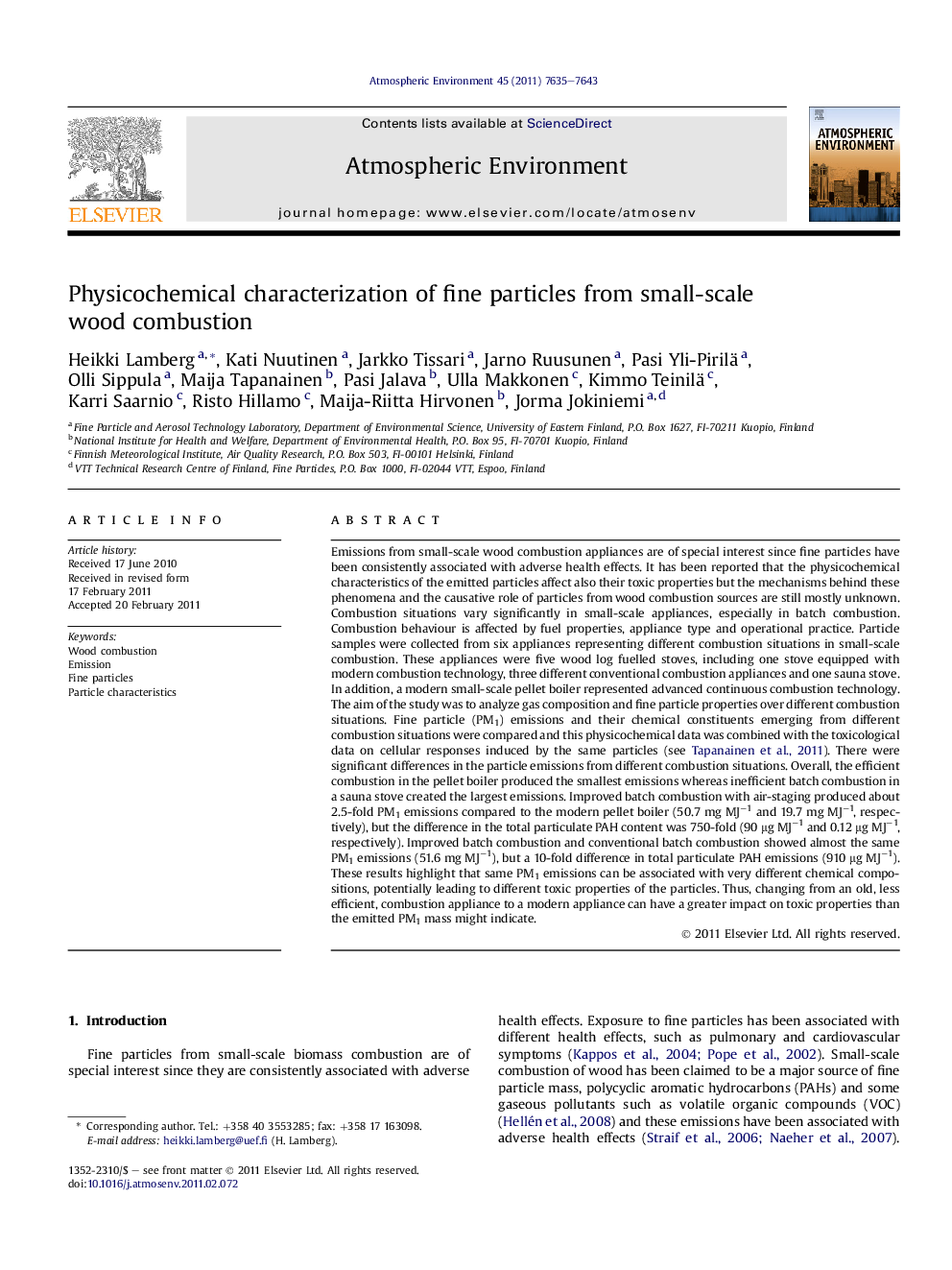| کد مقاله | کد نشریه | سال انتشار | مقاله انگلیسی | نسخه تمام متن |
|---|---|---|---|---|
| 4439391 | 1311017 | 2011 | 9 صفحه PDF | دانلود رایگان |

Emissions from small-scale wood combustion appliances are of special interest since fine particles have been consistently associated with adverse health effects. It has been reported that the physicochemical characteristics of the emitted particles affect also their toxic properties but the mechanisms behind these phenomena and the causative role of particles from wood combustion sources are still mostly unknown. Combustion situations vary significantly in small-scale appliances, especially in batch combustion. Combustion behaviour is affected by fuel properties, appliance type and operational practice. Particle samples were collected from six appliances representing different combustion situations in small-scale combustion. These appliances were five wood log fuelled stoves, including one stove equipped with modern combustion technology, three different conventional combustion appliances and one sauna stove. In addition, a modern small-scale pellet boiler represented advanced continuous combustion technology. The aim of the study was to analyze gas composition and fine particle properties over different combustion situations. Fine particle (PM1) emissions and their chemical constituents emerging from different combustion situations were compared and this physicochemical data was combined with the toxicological data on cellular responses induced by the same particles (see Tapanainen et al., 2011). There were significant differences in the particle emissions from different combustion situations. Overall, the efficient combustion in the pellet boiler produced the smallest emissions whereas inefficient batch combustion in a sauna stove created the largest emissions. Improved batch combustion with air-staging produced about 2.5-fold PM1 emissions compared to the modern pellet boiler (50.7 mg MJ−1 and 19.7 mg MJ−1, respectively), but the difference in the total particulate PAH content was 750-fold (90 μg MJ−1 and 0.12 μg MJ−1, respectively). Improved batch combustion and conventional batch combustion showed almost the same PM1 emissions (51.6 mg MJ−1), but a 10-fold difference in total particulate PAH emissions (910 μg MJ−1). These results highlight that same PM1 emissions can be associated with very different chemical compositions, potentially leading to different toxic properties of the particles. Thus, changing from an old, less efficient, combustion appliance to a modern appliance can have a greater impact on toxic properties than the emitted PM1 mass might indicate.
► Particle and gas emissions from small-scale wood combustion were studied.
► Fine particle properties under different combustion situations were analyzed.
► Modern combustion technologies produced clearly the lowest emissions.
► Same PM1 emissions can lead to potentially different toxic properties of particles.
Journal: Atmospheric Environment - Volume 45, Issue 40, December 2011, Pages 7635–7643